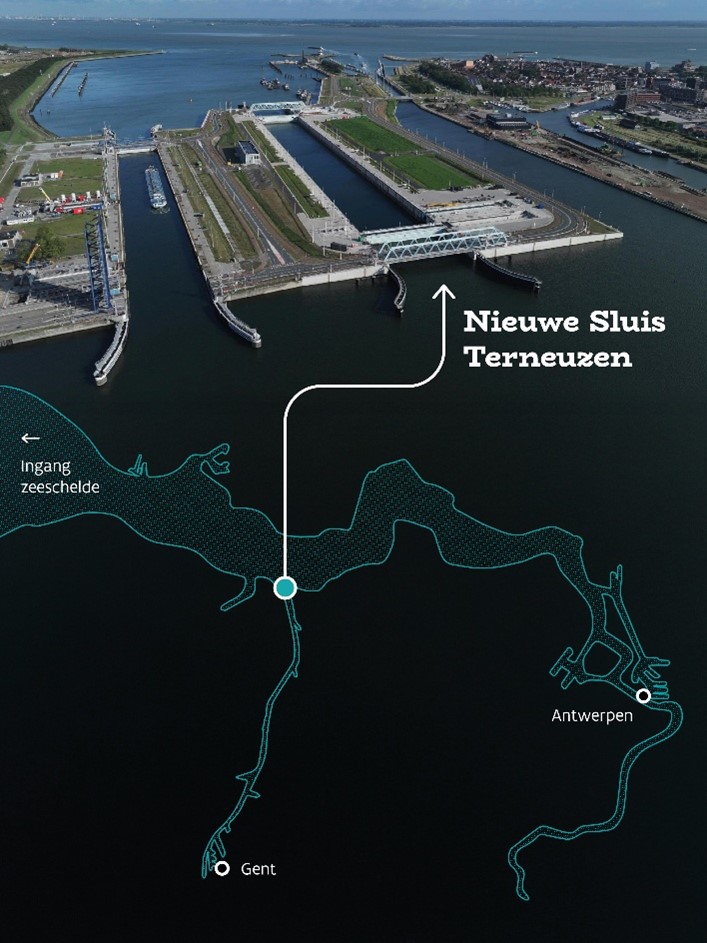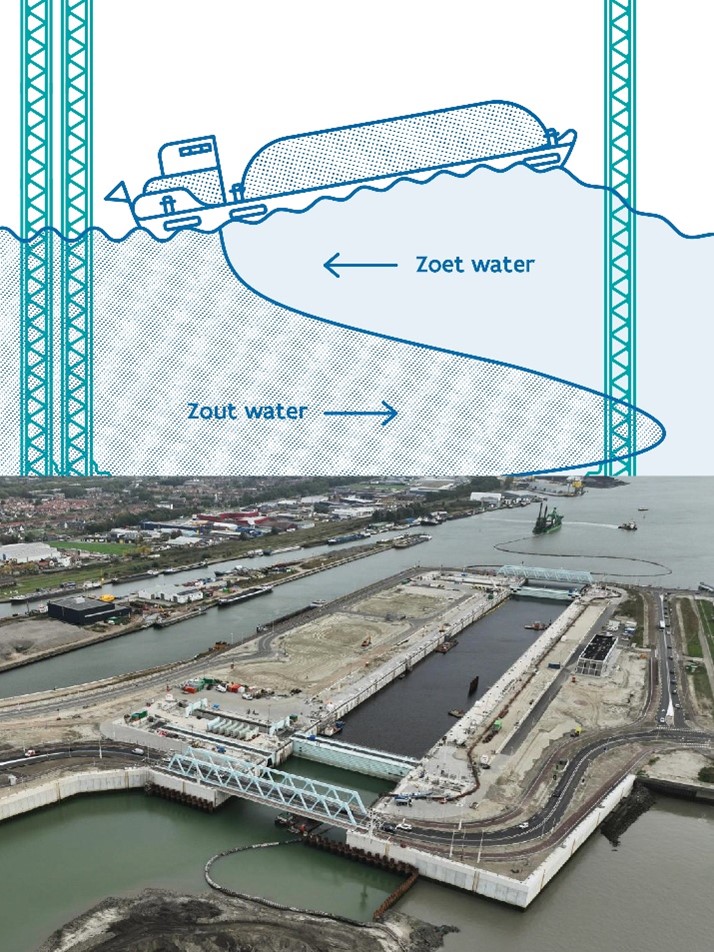On 24 October 2024, the New Lock Terneuzen was officially opened. But that did not mean ships could use it immediately. "First, we need to test the lock extensively," says Matthijs Schouten, Shipping Advisor and, together with Mario Vermeirssen, leader of the New Lock Terneuzen Commissioning Project Group on behalf of the JNM. "On the one hand, we carry out technical checks: do the lock gates, valves, and systems work as they should? On the other hand, we conduct test runs with vessels of various types and sizes – each and every one should be able to use the lock safely."
No two locks are alike
"Each lock has its own characteristics," Schouten explains. "How is it positioned in relation to other waterways, for example? What is the impact of passing traffic? You have to take all these particularities into account. What’s special about the New Lock Terneuzen is the interaction between the salt water on the Scheldt side, which is affected by tides, and the fresh water on the Ghent side, which remains at a constant level."
As a result, balancing the water levels is a major challenge. "At low tide, the water on the Scheldt side is lower; at high tide, it is higher. The lock level must be adjusted to these conditions each time. Moreover, salt water is heavier than fresh water. When we open the lock and the two come into contact, the fresh water flows over the salt water into the lock chamber. If a ship is in the lock at that moment, it can have a serious impact on the vessel."
That complexity was scrutinised even before the lock was finished. "At the Deltares laboratory in Delft, we built a scale model of the lock to test the levelling system."

One lock, many stakeholders
Expectations are high: the New Lock should enable more and larger ships to enter the Ghent-Terneuzen Canal from the Western Scheldt. Schouten: "To start with, we want to be able to accommodate the largest ships that currently use the Western Lock."
'We' refers to the New Lock Terneuzen Commissioning Project Group. Alongside the JNM and Rijkswaterstaat, the group includes Flemish and Dutch pilots, towing services, boatmen, North Sea Port, and inland navigation representatives. Together, they developed a test protocol. "We let ships of different sizes and manoeuvrability pass through the lock. In this way, we determine whether any operational restrictions or measures are needed to safely accommodate even the largest vessels."
Testing in phases
The commissioning of the New Lock Terneuzen is taking place in two phases. The first, the symbolic opening act, occurred in October 2024. "That's when the mega-ship Bregaglia sailed through the lock for the first time," says Schouten. "An exciting moment, but everything went well."
Phase two is currently underway, with ten test series. "We started with eight lockings of a vessel up to 110 metres long and 5.5 metres wide. Each time, we tested different approaches for sending it through the lock. For instance, we investigated whether a ship could lie directly over the two large grids of the levelling system, or whether it was better placed precisely between them. We also tested the differences between mooring on the east and west sides, with one or two vessels at a time."

Counting on measurements
"You can never foresee everything, but we want to get as close as possible," Schouten stresses. "That's why we are carrying out test runs with both inland and seagoing vessels, upstream and downstream, at high and low tide, with one or several vessels at a time. We are testing vessels up to 230 metres long and 37 metres wide, or 265 metres long and 34 metres wide. For each combination, we check how the vessels behave and what safety margins we can maintain in the future."
During this phase, the project group is collecting extensive data. "During passages of large seagoing vessels, we attach load sensors to six mooring lines to precisely measure the forces exerted on the vessel due to the fresh/salt water difference. And we have pretty much filled the entire lock with density meters to record what happens when the waters mix."
Such measurements provide valuable additional data. "Recently, a thesis student presented research on the impact of passing ships at the front lock of Hansweert. We are building on that research: during force measurements, we also use radar sensors to measure the drop in water level within the lock, to monitor the effects of passing ships on the Western Scheldt.”
A new traffic tool
The results of the measurements are used to develop formal recommendations. "Each party in the project group shares it findings with its stakeholders. The Joint Nautical Authority (JNA) can, of course, implement restrictions if needed."
"Other working groups – those focused on chain operation or ship handling, for example - can use this data and the insights from the test runs as input for reaching clear operational agreements in future. This way, we ensure that every ship can soon sail safely through the New Lock Terneuzen."
From agreement to commissioning
In 2012, the Netherlands and Flanders reached an agreement to build a new lock at Terneuzen. The goal was to improve access to the Western Scheldt and facilitate smoother transit along the Ghent-Terneuzen Canal. Thanks to the New Lock, larger vessels will be able to sail as far as the port of Ghent. The extra capacity will also reduce waiting times for inland shipping.
Construction began in 2017. Originally, commissioning was scheduled for 2022, but various delays – including those caused by the pandemic – pushed the timeline back. The New Lock was officially opened in October 2024, and full commissioning is expected in summer 2025.